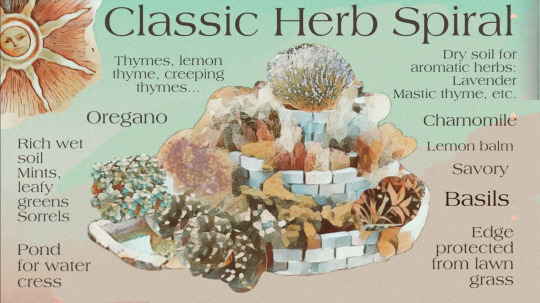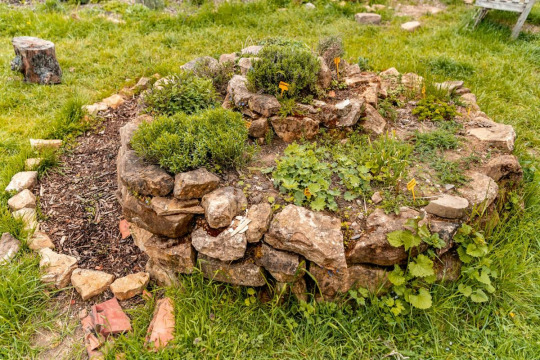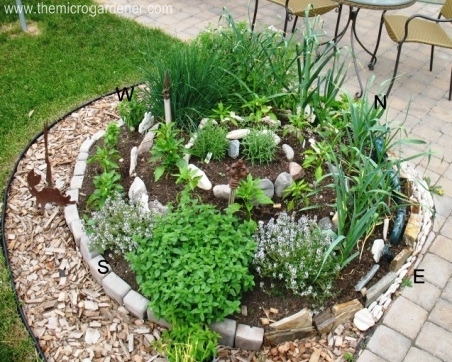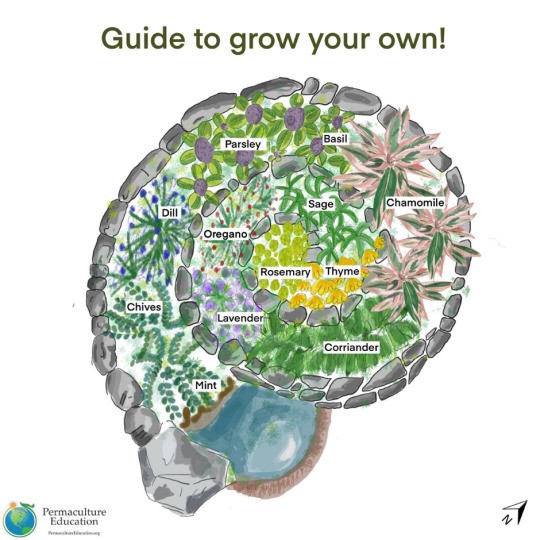#permaculture principle
Explore tagged Tumblr posts
Text
Inspiration for a classic mid-sized gravel backyard landscaping in the spring.

Inspiration for a mid-sized traditional full sun backyard gravel landscaping in spring.
#natural stone walls#backyard garden design#farm fresh garden#permaculture principle#traditional edible garden#custom garden walls#custom edible garden
2 notes
·
View notes
Text
Gravel Santa Barbara

Gravel Santa BarbaraIdeas for a classic mid-sized gravel backyard landscaping in the spring.
#companion planting#farm fresh garden#floral landscape design#stone garden walls#integrated pest management#permaculture principle#custom edible garden
0 notes
Photo

Vegetable Garden Landscape in Santa Barbara An image of a medium-sized, classic, full-sun backyard with gravel landscaping taken in the spring.
0 notes
Photo

Landscape Vegetable Garden Santa Barbara Image of a mid-sized, classic, full-sun backyard with gravel landscaping in the spring.
#integrated pest management#floral landscape design#permaculture principle#stone garden walls#custom garden walls#biodynamic#organic gardening
0 notes
Photo

Gravel Santa Barbara Ideas for a classic mid-sized gravel backyard landscaping in the spring.
#companion planting#farm fresh garden#floral landscape design#stone garden walls#integrated pest management#permaculture principle#custom edible garden
1 note
·
View note
Photo

Landscape - Gravel
#Inspiration for a mid-sized traditional full sun backyard gravel landscaping in spring. natural stone walls#custom edible garden#organic gardening#backyard garden design#permaculture principle
1 note
·
View note
Link
Transform your garden with the magic of edible landscaping! 🌿 Discover how to blend beauty and bounty in your outdoor space with our guide on "How to Incorporate Edible Plants into Your Landscape." Learn tips on selecting the right plants, employing sustainable practices, and bringing permaculture principles to life right in your backyard. Get ready for a garden that's as nourishing as it is aesthetically pleasing! Dive into the green revolution today.
0 notes
Text
From Novice to Pro: 8 Steps to Becoming a Successful Stockdog Trainer
See our latest news! #stockdogtraining #bondswithdogs #disciplineandfocus #problemsolving #patienceandperseverance #personalgrowth #e-courses #trainingprograms #books #merchandise #landmodsdesign #cowboypermaculture MERCH www.landmodsdesign.etsy.com
Once upon a time in the vast, rugged plains of the Wild West, there was a young cowboy named Jack. He had always dreamed of mastering the art of stockdog training, but he didn’t know where to begin. Determined to turn his dream into reality, Jack set out on a journey to become a successful stockdog trainer. Little did he know that this journey would transform not only his life but also the lives…
View On WordPress
#advanced training techniques#agroforestry#biodiversity#cowboy lifestyle#cowboy permaculture#ecological farming#green living#holistic land management#land stewardship#nature conservation#organic farming#permaculture design#permaculture principles#rodeo#rodeo dreams#self-sufficiency#sustainable agriculture#sustainable community#sustainable farming#sustainable forestry#sustainable gardening#sustainable homesteading
0 notes
Photo

Denver Contemporary Landscape Design ideas for a large contemporary full sun front yard mulch driveway in summer.
#covered breezway#mulch#ornamental grasses#rock garden#boulder style#permaculture principles#outdoor metal sculpture
0 notes
Photo

Mulch Front Yard (Denver)
#Design ideas for a large contemporary full sun front yard mulch driveway in summer. outdoor metal sculpture#modern architecture#permaculture principles#sustainable landscape design#covered breezway#ornamental grasses#stella de oro daylily
0 notes
Photo

Gravel - Traditional Landscape
#Ideas for a classic mid-sized gravel backyard landscaping in the spring. permaculture principle#natural stone walls#backyard garden design#floral landscape design#landscape
0 notes
Text
The Permaculture Spiral Garden - A Great Starting Point
There is probably no other structure as popular for illustrating Permaculture in practice as the Herb Spiral. Okay, I guess I could mention the lasagna sheetmulching method or also the cob oven that tends to be the first hands-on project at a typical Permie intro session. But when it comes to showing how landscape design, zones and sectors, stacking functions, and efficient use of space and water come together in one unique structure, the Spiral Garden is unbeatable.

Turning Theory into Practice
In typical Permaculture Designer Certificate courses, but even in brief intro weekends to Permaculture, there tends to be a lot of theoretical discussions. Since the numerous design principles can be applied to any climatic region, from the tropical to the subarctic, and on any scale from the humongous to the tiny, the practical aspects of the ideas can easily get lost. That's where a good hands-on application comes, where the participants get to move around rocks and dirt, while realizing how much it ties in to the concepts they've just discussed. This way the apparent "main purpose" of "building something to grow all your kitchen herbs on", becomes a neat side feature.

Adjust Your Landscape!
The first thing to realize that landscape is welcome to be modified and adjusted to bring out the best in it. Clearly, while it is important to work with what's there already, it doesn't hurt think about mounds and valleys. And before you bring out the excavators for your large-scale farm, it makes sense to start small… say on a circle of 2-5 meters (6-16 feet) diameter. In other words, the Spiral Garden is a hill with a spiral shaped surface, leading down to ground level, or further down into a water hole. It can be made out of rocks, bricks, concrete debris, or anything else you have lying around that can hold your soil.

Design According to Your Scale
Looking around for existing Herb Spirals it's easy to get confused. Some are so big you can actually climb on them (that is, you have to in order to reach what's growing on top). Others are so tiny that you may not even want to step on them. The question is: which size is the right one for you? Since this is something you will have to decide almost daily in Permaculture, it doesn't hurt starting out with this important question.

Organizing Your Spiral Garden
While there are seemingly endless types of Spiral Gardens, there are a few things they all have in common: They all start out with a region on the top, where water is bound to run off right away, leaving the soil relatively dry. This area is also the most exposed to the wind. Keep this in mind when choosing the plants that are going to live here. Ideally, the spiral should start sloping toward the East from here. Delicate plants that benefit greatly from the morning sun will appreciate this region. As the slope continues toward the South and West, it becomes more suitable for sun loving species. Finally, as the spiral reaches the ground level in the shady Northern part, it will be perfect for herbs that prefer less sun, more shade and more water, since the soil tends to be wetter here. (Note: This is for the Northern Hemisphere. In the Southern Hemisphere North and South are reversed.) To make full use of the runoff water, many people add a small pond at the base of the spiral, where additional aquatic plants, such as watercress, can be grown.

The given illustration offers a good number of herbs for a nicely diverse kitchen. Depending on what else you want in your Herb Spiral, you can add it in the most suitable region. Mint and lemon balm love the cooler, shady part with more water. Lemongrass is great in the sunny area, and tarragon and estragon prefer the dry top of the spiral. Of course, the idea is not limited to kitchen herbs. For maximalists, the same theory can work with a mountain you might want to terraform into a spiral farm. But right now I'd prefer to stay small scale.

Plenty of Benefits (That's Why It's Permaculture)
As explained above, the main purpose of the Spiral Garden is not only to increase your gardening area by making use of the vertical, but also to create diverse climatic conditions, which do make a difference on the smallest scale. But as Permaculture tends to be, there are many other benefits to it. The structure itself offers great habitat for numerous animals, such as frogs, salamanders, lizards, but also pollinating insects, and of course others that may not directly benefit us, but by feeding on others they all add to the stability of our ecosystem. The structure itself will suppress weeds and make use of material that you're not likely to use elsewhere. Finally, depending on the size and location, it will be an ideal place to grow all your kitchen herbs right where you can access them most easily.

Some Things to Keep in Mind
When building the structure, make sure it will contain the soil in a nice trough, slanting slightly inward. That way bits and pieces that fall off will roll towards the center, until contained by the main mound.
Make sure the slope is always nice and gradual, avoiding sudden drops where the water can rush down quickly, eroding the soil.
If you're going to walk on your spiral, include a separate walkway that won't compress good soil. Most importantly, it should be sturdy enough to provide stability and make access safe.
Don't forget that while the structure is important to keep the soil in place, it is the soil that you'll be growing plants in. So it should have a good depth of 20-50 cm (8-20 inches) throughout the entire spiral. This can be the trickiest part!
Apply your own observation to which plants do better in which parts of the spiral. Also, with time you will find many other plants growing in it that you didn't plant. Before removing them, consider how much they actually bother your herbs, and whether their benefits may not outweigh their drawbacks.
Go Out and Build Your Own!
I hope this brief overview got you inspired to go out and try building an Herb Spiral yourself! I would love to hear your experiences with it!
Sources: 1, 2, 3, 4
3K notes
·
View notes
Note
Hey do you have any tips for making my garden very low maintenance but still productive. I have a large raised bed and a field with very good soil quality but I just don't have the energy to garden all the time. They both get lots of sun.
These tips are mostly focused on reducing the maintenance required in weeding and watering, which are often the two biggest things that gardeners end up doing to maintain gardens. These tips are also fairly general. As always, if you have more specific questions, please feel free to send in another ask with more details!
Mulch is my go-to method to reduce weeding and watering. Putting mulch around your plants helps keep water from evaporating out of the soil and makes it a lot harder for weeds to grow. This doesn't have to be fancy expensive mulch either - lawn clippings or wet newspaper work just fine (and I would argue better than traditional wood chip mulch).
Soaker hoses are a low-effort way to water, especially if your garden is large. Depending on your setup, watering the garden could be as simple as turning on a spigot.
The Ruth Stout method is an entire gardening method that combines mulching and no-dig techniques to grow plants with minimal effort. An overview here.
Grow native plants. They're already adapted to the growing conditions of your area and tend to grow well with little human input. If you're in the US, your local county extension office can help you pick options and possibly source seeds.
Similar to the last point, choose hardy, low-maintenance plants. I'm using vegetable examples here since that's most of what I grow personally: Beans, peppers, greens like lettuce and spinach, summer squashes like zucchini, and many herbs tend to grow perfectly fine if you throw the seeds at dirt and water them occasionally. Potatoes, carrots, onions, and tomatoes either require special soil preparation or tend to need more maintenance and care while growing to deal with pests or disease. Find the overlap between what grows well in your climate and growing season and what doesn't require a lot of maintenance or preparation.
Look into permaculture gardening principles. A running permaculture garden should be fairly low-maintenance, but it can take a lot of energy and effort to get it going, which may not be the best fit for what you need. However, there are a lot of overlapping concepts in permaculture. You may find things you can implement in your garden to reduce how much energy you have to put into it without going full permaculture. One intro here, another here; I'm also a huge fan of Heather Jo Flores and Food Not Lawns as resources.
I hope this helps! Followers, please chime in with any tips you may have.
- Mod J
188 notes
·
View notes
Text
In order to reach 350 ppm—the level we were at in 1988—we’d need to remove 500 billion tons of CO2 from the atmosphere. To hit the pre-industrial mark of 280 ppm, 900 billion tons. If we were to use plants to accomplish this, we would need them to add 138 billion tons and 249 billion tons of biomass, respectively. This is roughly the equivalent to 1.3 and 2.5 Amazon rainforests, respectively, if we count both above and below ground biomass. So, what can we do with all that carbon? As the Amazon analogy implies, growing more forests would do the trick. In the last 10,000 years, the Earth has lost 7.7 million square miles of forest, equal to 2.85 Amazons. So we can exceed our target for atmospheric CO2 removal by returning to the 57% forest coverage of Earth’s habitable surface that we had at the end of the last Ice Age. That was the climate that allowed for the vast expansion of humanity, so that approach holds a lot of appeal. Additionally, the Amazon analogy demonstrates that vast reforested areas can support human civilization beyond simply sucking down CO2. The Amazon itself is a vast food forest filled with edible species that were planted 4,500 years ago by its human occupants, who built a thriving civilization based on the readily available food surrounding them. A contemporary global reforestation initiative should also focus on edible species, thus serving the dual purpose of creating an abundant perennial food source and sequestering CO2. A mature food forest can yield at least 2,100,000 calories per acre with minimal inputs, enough to feed two adults. A stable climate PLUS more free food than all of humanity could possibly eat sounds pretty good. It goes without saying that climate change is not the only ecological catastrophe facing humanity. We have crossed six of nine planetary boundaries, any one of which could spell our doom. A globe-spanning food forest would help address those looming disasters, such as biodiversity loss and biogeochemical flows, as well. But there are challenges to the forestry approach. Environmental conditions have degraded immensely in the last 100 years, and it's possible that not all previously forested areas would now support trees. Some estimates put the possibility of reforestation at half of the 7.7 million square miles lost and argue it would take thousands of years to accomplish. I have doubts about these estimates, but it's important to be cautious. Additionally, the principle of redundancy is crucial in permaculture, and it's not hard to see how it applies here: we would not want to put all our eggs in one basket with the future of life on Earth at stake. So how can we move faster while diversifying our risk?
124 notes
·
View notes
Text
In 20 minutes I share everything I wish I knew before I started designing my permaculture food forest.
This video covers strategies for capturing and storing water, improving and feeding your soil, creating a baseman for capturing your observations, swales, contours, guilds and layering your food forest and working with succession as well as some syntropic agroforestry techniques that you can use in your backyard.
A permaculture food forest requires upfront work, but the long-term rewards are huge! That is why I believe it’s the easiest way to grow food. No annual tilling, no toiling under the hot sun year after year, no need to purchase inputs once your forest is established. Once you set up a successful system, it will thrive for generations to come.
Links mentioned in the video:
Want to experience the magic of Goldifarms? Visit our Etsy shop: https://www.etsy.com/shop/Goldifarms
The following are Amazon Affiliate links and I may receive a small commission if you purchase through these links:
Humanure Handbook by Joseph Jenkins
https://amzn.to/441FP9w
Restoration Agriculture by Mark Stepard
https://amzn.to/422yG7k
About Goldifarms:
My name is Erin. I started Goldifarms in my backyard in January 2020 as part of my journey to heal myself and restore this land. I follow permaculture design principles to create regenerative abundance here on the Central Coast of California in zone 9a. My intention with this YouTube channel is to provide inspiration to connect with nature, grow your own food and medicine, and help create a more beautiful world together.
Thank you for all your support, I hope these videos will inspire you to follow your heart and pursue what lights up your life ✨ 🌼💛
Sending so much love to you on your journey. Thank you for watching 🐝💛🌻
Want to experience the magic of Goldifarms? Visit our Etsy shop: https://www.etsy.com/shop/Goldifarms
For a brief history of Goldifarms, check out: https://www.youtube.com/watch?v=_u5z7...
For pics of the whole project, visit: https://www.instagram.com/goldifarms/
To learn more and contact Goldifarms, visit our website: Goldifarms.com
To support Goldifarms (which would mean the world to me!), you can become a Patron: https://www.patreon.com/goldifarms
If you never want to miss a Goldifarms video, subscribe by clicking here: https://youtube.com/goldifarms?sub_co...
For access to exclusive videos, consider joining my membership channel: / @goldifarms
Music from Epidemic Sound. If you create videos and are looking for a huge selection of music, feel free to use my epidemic referral for a free month: https://share.epidemicsound.com/hlg6dg
Chapters
00:00- Intro
00:33 - Start with Why
01:20 - Imagine
03:03 - Observe
04:09 - Create a Basemap
05:18 - Design for Water
09:45 - Get that GoldiGlow!!✨
11:04 - Feed your Soil
13:52 - Layers and Succession
18:38 - Design Iteratively
#Goldifarms#solarpunk#permaculture#food Forest#agriculture#how to#how to make#how to make a food forest#farming#garden#gardening
231 notes
·
View notes
Text

Conclusion
Anaculture is a new proposal, a shift in mindset from the old way of thinking about oneself as the heroic farmer, to one of mutual aid and cooperation. These are long time anarchist principles that form the basis of Anaculture. This design philosophy realizes that only through universal emancipation can we say we are taking care of the people of this planet. When the means of producing the society rests in the hands of the wealthy elite we can never hope to provide more than a window dressing to the oppression of billions. This is not something that any ethical system can allow. The people must challenge the ability for the State to do it’s business by any means necessary.
It is not enough to choose metal straws over plastic ones, we all know this. It’s time to recognize that it’s not enough to ask for reform from those who oppress you, you must organize to take what you need. We must organize to take the land that is needed for our projects. The politicians will not listen to out demands, and this is what permaculture needs to learn from anarchism. That demands don’t work, and this is not a dialogue. This is a war, and there is no neutral position on this battlefield. Being non-capitalist is not enough, we need to become anti-capitalists. Seizing state authority is not enough, we need to become anti-authoritarians.
If permaculture is to survive it must be willing to critique and change itself.
If not it will become another institution and cease to be a movement at all. It will calcify and rot from neglect and disinterest. The next generation is getting bored of the current politics of feigned neutrality and ethics that don’t line up with the actions of the movements participants. So let this article stand as one critique. I love the concepts of this design system, I hope that we can develop a better system that takes the good from what was there and learns from the bad.
We may soon be living in a post-permaculture world, where the movement was gutted before it really got a chance to take off. Let’s come together to create something new collectively. Thank you to Bill for getting us all together, but we need something new now, and Anaculture can offer the way forward. The intelligently designed systems of permaculture combined with the political militancy of anarchy will make a potent force in today’s political landscape, one that can both resist and act.
#anaculture#permaculture#anti-economy#cooperation#culture#Ecology#economy#mutual aid#safety#autonomous zones#autonomy#anarchism#revolution#climate crisis#ecology#climate change#resistance#community building#practical anarchy#practical anarchism#anarchist society#practical#daily posts#communism#anti capitalist#anti capitalism#late stage capitalism#organization#grassroots#grass roots
8 notes
·
View notes